
Second in a series exploring sample exam questions.
If you have other ways to sort out these questions, please comment and let us learn and compare approaches. [Read more…]
Your Reliability Engineering Professional Development Site
Author of CRE Preparation Notes, Musings", NoMTBF, multiple books & ebooks>, co-host on Speaking of Reliability>/a>, and speaker in the Accendo Reliability Webinar Series.
This author's archive lists contributions of articles and episodes.
by Fred Schenkelberg Leave a Comment

If you have other ways to sort out these questions, please comment and let us learn and compare approaches. [Read more…]
by Fred Schenkelberg Leave a Comment

Imagine you are requested to assist a design team in determining how to best improve the reliability of a product. You learn that the organization produces a range of point of sale (POS) devices and they have invited you to a meeting with their staff to discuss the product and ways to improve the field reliability.
To help understand the situation, you may have already started to think of a set of questions whose answers would lead to suitable recommendations: [Read more…]
by Fred Schenkelberg Leave a Comment
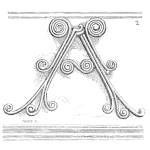
ASQ has posted sample exams for the past 10 or so years for the certifications. The CRE one is from 2009 and has questions used on previous exams. You can find a copy here or here.
This post has the first 5 questions with the answers explained. This is how I think or work through the problem to select an answer. Please comment if you have a different approach, especially if it would save time. [Read more…]
by Fred Schenkelberg Leave a Comment
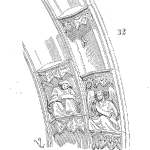
A life-support-equipment company manager desires to conduct a reliability program assessment. The company is experiencing about a 50% per year failure rate and at least the Director of Quality thought it should do better. One of the findings was related to reliability goal setting and how it was used within the organization.
Nearly everyone knew that the product had a 5,000-h Mean Time Before Failure (MTBF) reliability goal, but [Read more…]
by Fred Schenkelberg Leave a Comment

The concept of a maturity model is not new. It provides a means to identify the current state and illuminate the possible improvements to a reliability program. The matrix serves a guide to assist an organization in improving its program.
The matrix has five stages. In general, the higher stages are most cost effective and efficient at achieving higher rates of product reliability performance. These stages—uncertainty, awaking, enlightenment, wisdom, and certainty—are described in today’s post. [Read more…]
by Fred Schenkelberg 2 Comments

Over the past few weeks, we have explored about 8 different hypothesis test formulas. There are more. So, how do you determine which test to perform? Well, that depends on the question you are trying to answer and the type of data you’re dealing with. [Read more…]
by Fred Schenkelberg Leave a Comment

An essential element of a successful reliability program is the notion that all reliability activity relates to decisions. If you are performing a HALT because it is listed in the product development guidelines, or because it was carried over from the last program’s plan, and the HALT results are not part of the design improvement decision-making process, then you probably should not be doing so. If the HALT results yield little or no information (e.g., it is just being checked off the list as accomplished) then the HALT itself provides little or no value. [Read more…]
by Fred Schenkelberg Leave a Comment
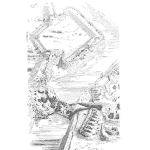
The F-test provides a means to compare paired data variances. It is a variance hypothesis test.
If we are exploring the precision of one measuring device or another, or we are comparing assembly processes, we often want to know if the variance is different or not.
Working with data from normal distributions from two different processes or devices, we know from statistical theory that the ratio (s1)2 / (s2)2 is described by the F distribution.
There are three hypothesis test possible, basically to test if the population variances are different, or one is less than or greater than the other. The following details the three test’s null and alternative hypotheses. [Read more…]
by Fred Schenkelberg Leave a Comment
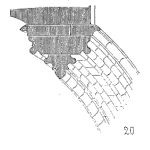
This will be the last of the series, considering the different positions in an organization that deals with product reliability. We’ve moved away from the positions where the focus on reliability is central, but there are important considerations in relation to product reliability for each of these roles still. In this concluding post the subjects are the manufacturing team, and field service and call center staffs. [Read more…]
by Fred Schenkelberg 3 Comments
A key preparation step for the CRE exam is to have and know how to use a simple calculator. I use my smartphone and a calculator app – and I would not be permitted to use the phone during the exam. Same with tablets, computers, and other common tools that we now take for granted. [Read more…]
by Fred Schenkelberg Leave a Comment

In this installment of the series dealing with the myriad participants within an organization, we’ll start with failure analysis specialists, before moving to marketing and sales, and finally getting to the finance team. We’re moving away from the positions where the focus on reliability is central, but there are important considerations in relation to product reliability for each of these roles still. The next post in this series will be the final one. [Read more…]
by Fred Schenkelberg Leave a Comment
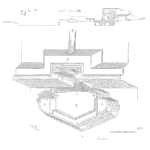
As with the Markov Inequality, we may find useful information from a list of values, say time to failure data. Again, none of the numbers may be negative for this to apply, yet with life data that is rarely the case.
Short on time- a common situation for reliability engineers; we have only the mean, standard deviation and number of values in a list. And, we need to say something about the data and the number or fraction of value above a specific value. [Read more…]
by Fred Schenkelberg Leave a Comment

If we have a list of numbers, saw cycles to failure for a test. None are negative. And, we do not have time for a complete analysis before being asked about the results.
What can we do?
In this case, the Markov Inequality may prove useful for a quick assessment of the results. [Read more…]
by Fred Schenkelberg Leave a Comment
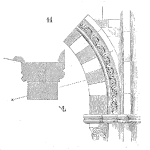
Continuing the series where we examine various roles within an organization and the ways in which each role interacts and affects product reliability, this post will start off with procurement engineers and managers. Since each role hereafter is a bit less involved, multiple roles will be grouped together. After procurement, we’ll take a look at warranty managers. [Read more…]
by Fred Schenkelberg Leave a Comment

The last post moved into the role of quality and reliability engineers, and the influence that leadership in design and product development has on the product reliability process. Similarly, this post will move to Q & R managers, again looking at the role of that position in relation to product reliability.